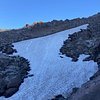Ut tellus dolor, dapibus eget, elementum ifend cursus eleifend, elit. Aenea ifen dn tor wisi Aliquam er at volutpat. Dui ac tui end cursus eleifendrpis.
Ut tellus dolor, dapibus eget, elementum ifend cursus eleifend, elit. Aenea ifen dn tor wisi Aliquam er at volutpat. Dui ac tui end cursus eleifendrpis.


Highlighted Serengeti National Park Wildlife species include over 1,000 leopards, 3,000 lions, 5,000 elephants, and an incredible 7 million wildebeest, alongside a myriad of other species such as buffalo, zebras, gazelles, and an array of birdlife. Spanning an impressive 14,763 square kilometers, the Serengeti is an expansive haven teeming with life, earning its reputation as one of the world’s most biodiverse ecosystems.
At its core lies the Serengeti Great Wildebeest Migration, an annual spectacle where millions of wildebeest, accompanied by zebras and gazelles, traverse the plains in search of greener pastures. The Tanzania Safari Experience here promises endless encounters with wildlife, sweeping savannah vistas, and an immersion into the rich cultural landscape of the indigenous peoples who call this land home.
Explore the best of Tanzania's wildlife and landscapes with Tanzania Safari Packages, designed for unforgettable Tanzania Safari Experiences.
Take the first step towards your dream safari adventure by exploring our range of customizable packages and itineraries.
Customize Your Trip
Familiarize yourself with the different safari specifics of Serengeti National Park – from booking processes to interesting facts.
Rules for Serengeti National Park Tours include sticking to designated tracks, not littering, and not disturbing the Tanzania Wildlife species during game drives.
Tanzania Serengeti National Park is renowned for its vast savannahs, diverse wildlife, and the Great Wildebeest Migration.
Safaris in Serengeti National Park typically attracts over 350,000 tourists annually, drawn by its natural wonders.
Beauty is subjective, but Serengeti National Park Safari areas like the Seronera Valley and the Grumeti River offer stunning landscapes and abundant wildlife.
Serengeti National Park Weather is characterized by a tropical climate with distinct wet and dry seasons and warm temperatures throughout the course of the year.
2 top most interesting Serengeti National Park Facts include:

Trust Rena Tours to provide you with personalized service, expert guidance, and unforgettable safari experiences




Explore Tanzania
Explore Tanzania
Explore Tanzania
Explore Tanzania
Explore Tanzania
Explore Tanzania
Explore Tanzania
Explore Tanzania
Explore Tanzania
Explore Tanzania
A well organized safari company, we booked our trip with them everything went good, John our driver was fully of knowledge

Cannot tell much about this company. Our first approach from first enquiry point was wonderful, quick response to our questions and concerns.
Our Tanzania Travel Guide offers insider insights and recommendations to help you amplify the experience of travelling around this vibrant country.
The Safari Packing List Tanzania necessitates considerations for the climate,
While the allure of Safari Tours in Tanzania lies in encounters with the Big Five,
The Average Cost of Safari in Tanzania is influenced by certain factors a mid-range